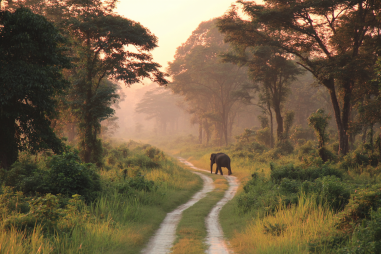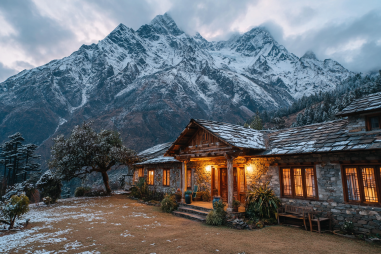Trekking to Everest Base Camp is a dream adventure for many, offering breathtaking views and a profound connection with nature. However, the high altitude comes with its own set of challenges, chief among them being altitude sickness. Understanding how to prevent and manage altitude sickness is crucial to ensure a safe and enjoyable trek. This article covers everything you need to know about recognizing symptoms, acclimatizing properly, and handling emergencies while on the trail.
Understanding Altitude Sickness and Its Causes
Altitude sickness, also known as acute mountain sickness (AMS), occurs when your body struggles to adapt to decreased oxygen levels at high elevations. Everest Base Camp sits at an elevation of approximately 5,364 meters (17,598 feet), where the air is much thinner than at sea level. The decreased oxygen availability means your body must work harder to get the same amount of oxygen, which can trigger symptoms ranging from mild to severe.
Causes of altitude sickness include rapid ascent without adequate acclimatization, dehydration, strenuous physical activity at high altitude, and individual susceptibility. Some people are naturally more sensitive to altitude changes, while others adapt quickly. The key is to give your body enough time and support to adjust to the changing conditions.
Common Symptoms to Watch Out For
Recognizing the symptoms of altitude sickness early can make a big difference in preventing serious health issues. The symptoms typically start within hours of gaining altitude and can vary in intensity.
- Headache: Often the first and most common sign, a persistent headache at high altitude should never be ignored.
- Nausea and Vomiting: Feeling sick or vomiting can indicate that your body is struggling to adjust.
- Dizziness and Fatigue: Unusual tiredness or difficulty maintaining balance are warning signs.
- Shortness of Breath: Breathing becomes more labored even with minimal exertion.
- Loss of Appetite: A decrease in hunger is common as altitude sickness progresses.
- Swelling: In some cases, swelling of the hands, feet, and face occurs.
More severe forms like High Altitude Pulmonary Edema (HAPE) and High Altitude Cerebral Edema (HACE) are medical emergencies involving fluid buildup in the lungs or brain, respectively. Symptoms include severe breathlessness, coughing (sometimes with pink frothy sputum), confusion, inability to walk, and unconsciousness. These require immediate descent and medical attention.
Acclimatization Strategies and Rest Days
The cornerstone of preventing altitude sickness is proper acclimatization. This means ascending gradually and allowing time for your body to adapt to higher altitudes.
- Ascend Slowly: Avoid rapid climbs. A common guideline is to not increase your sleeping altitude by more than 300-500 meters (1000-1600 feet) per day once above 3,000 meters (9,843 feet).
- Include Rest Days: Plan rest days every few days at intermediate altitudes. This ‘climb high, sleep low’ technique helps your body adjust.
- Listen to Your Body: If symptoms develop, consider staying at the same altitude or descending slightly.
- Train Beforehand: Getting physically fit and doing some pre-trek hikes can improve your body’s response to altitude.
Many trekking itineraries incorporate acclimatization days at Namche Bazaar and other stops to minimize AMS risk. Sticking to these schedules is vital – skipping acclimatization days to ‘push on’ can be dangerous.
Importance of Hydration and Nutrition
When trekking at high elevations, hydration and nutrition play a key role in reducing altitude sickness risk and maintaining energy levels.
- Drink Plenty of Water: Dehydration exacerbates altitude sickness symptoms. Aim to drink at least 3-4 liters daily, sipping consistently throughout the day.
- Avoid Alcohol and Excessive Caffeine: Both can contribute to dehydration and interfere with sleep.
- Eat Balanced Meals: Focus on high-carbohydrate foods which require less oxygen to metabolize and provide sustained energy.
- Snacking: Carry easy-to-digest snacks such as nuts, dried fruit, or energy bars to keep your blood sugar stable.
Maintaining good nutrition and hydration is simple but often overlooked when you’re focused on the trek itself. Helping your body stay fueled and hydrated supports acclimatization and overall health.
Emergency Measures and Descent Protocols
If symptoms of altitude sickness worsen or become severe, immediate action is required. The most effective treatment is to descend to a lower altitude as quickly and safely as possible.
- Stop Ascending: No matter your desire to reach your goal, do not continue upward if you experience symptoms.
- Descend Gradually: Even a descent of 500-1000 meters can significantly improve symptoms.
- Use Supplemental Oxygen: Portable oxygen tanks can provide relief during descent or in emergencies.
- Medications: Drugs like acetazolamide (Diamox) may help prevent or reduce AMS symptoms, but should be taken under medical advice.
- Monitor Symptoms: Persistent or deteriorating symptoms warrant immediate evacuation.
Many trekking groups carry emergency communication devices and have well-established evacuation plans. Knowing and following these protocols can save lives.
When to Seek Medical Help
Knowing when to involve healthcare professionals is crucial. Mild symptoms can often be managed on the trail, but severe symptoms require urgent medical attention.
- If symptoms rapidly worsen despite rest and hydration.
- Inability to walk or confusion, indicating possible cerebral edema.
- Severe breathlessness at rest or coughing up blood, signs of pulmonary edema.
- Persistent vomiting leading to dehydration.
- Loss of consciousness or seizures.
Most trekking companies have access to high-altitude clinics at places like Namche Bazaar and Lukla. Helicopter evacuation is also available in emergencies, though costly. It’s better to err on the side of caution and seek help quickly.
Role of Guides and Porters in Safety
Experienced guides and porters are invaluable assets on the Everest Base Camp trek. Besides their knowledge of the trail, they monitor trekkers for signs of altitude sickness and help enforce safety protocols.
- Guides: They advise on pacing, hydration, and acclimatization schedules and can recommend descent if a trekker’s condition worsens.
- Porters: Often familiar with high-altitude conditions, they can assist in carrying extra supplies and helping in emergencies.
- Communication: Guides maintain contact with medical facilities and rescue services and can coordinate evacuations if needed.
Trusting and following your guide’s advice is one of the best ways to mitigate risks during your trek.
Trekking Smart at High Altitudes
Preparation, awareness, and respect for the mountain environment are the pillars of a safe Everest Base Camp journey. Be patient with your body’s pace, prioritize acclimatization, and maintain good hydration and nutrition habits. Recognize early symptoms and do not hesitate to take action or seek help.
Altitude sickness is a serious but manageable risk. With proper planning and vigilance, you can fully enjoy the magnificent landscapes and cultural experiences that make the Everest Base Camp trek so unforgettable.







